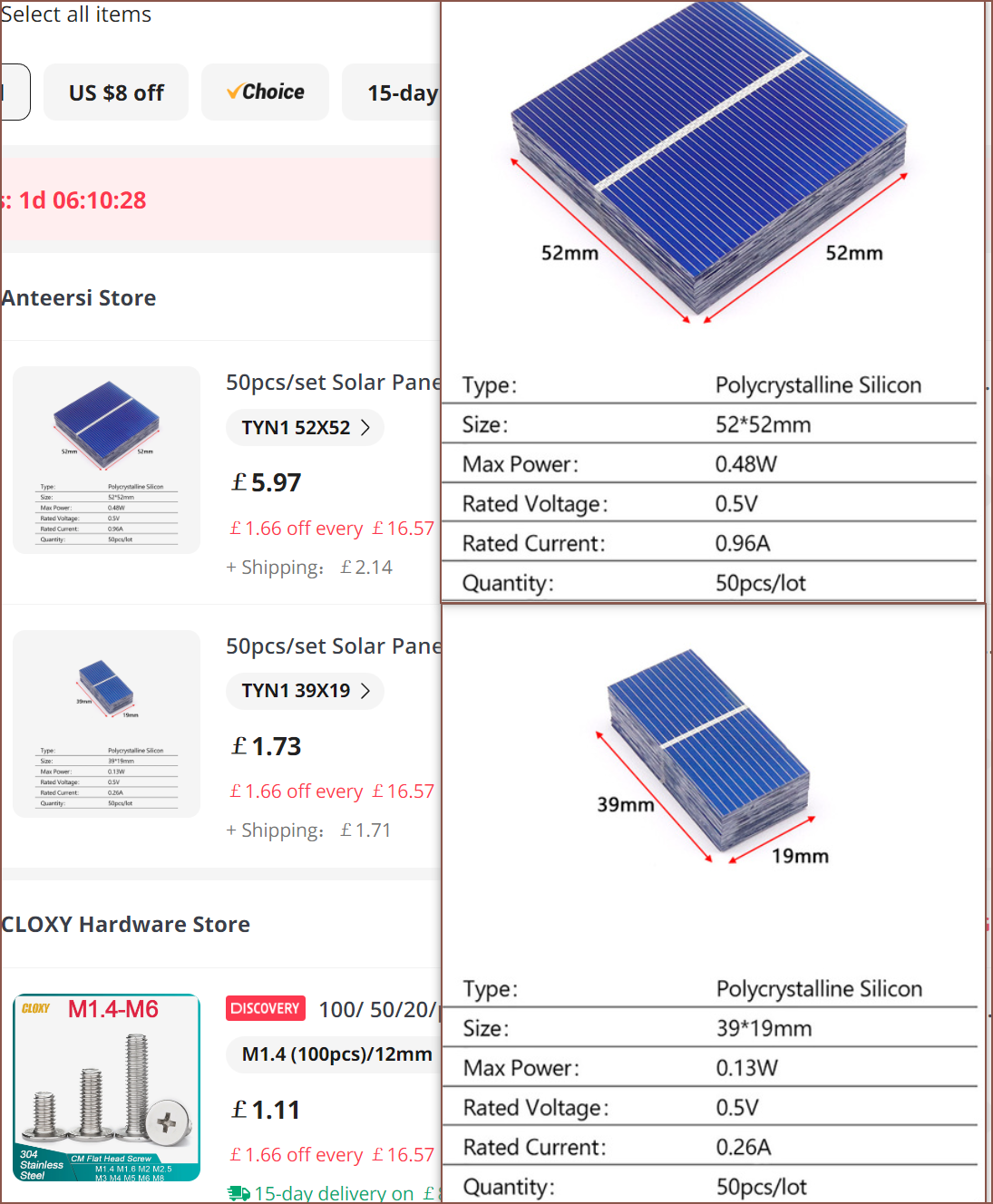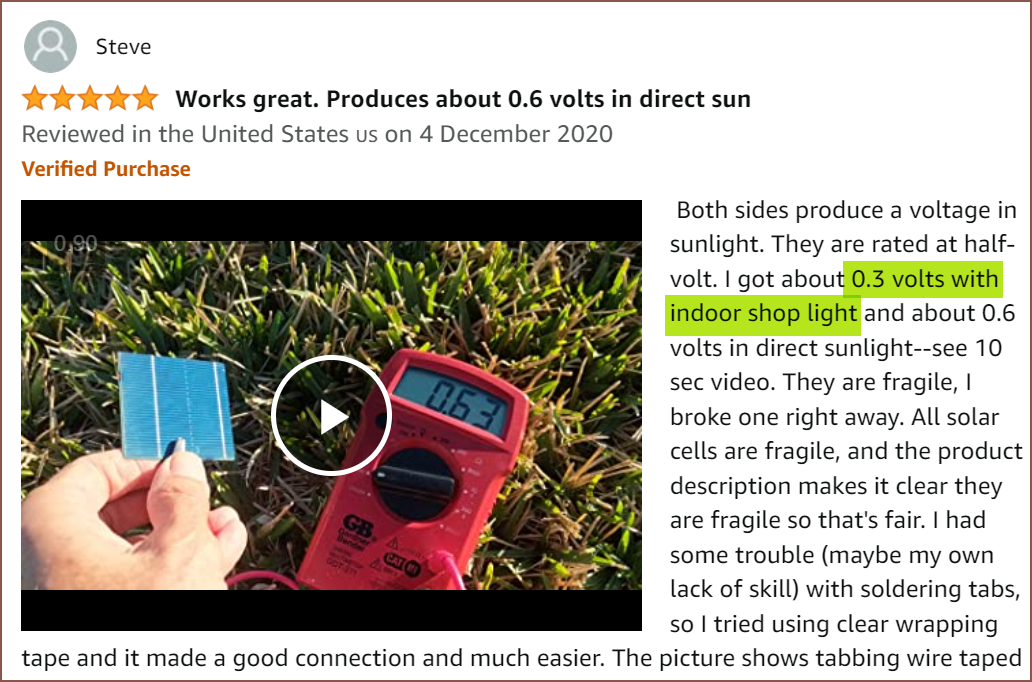I was looking at the nice little solar cell built into my calculator, and thought of something: for the people that would say "I'd (almost) never turn those LCDs on", what if a different surface could still have a use compared to a inert slab of material? Instead of turning power into photons, there could be an opportunity to turn photons into power. Were in the 2020s now and should be thinking about how to integrate sustainable power into products. There actually are some solar keyboards, but it's the first time I'm ever hearing about them and the keys themselves sure aren't photovoltaics.
Supringingly, conveniently enough, there are 2 solar cells that are size equivalent to the LCDs on Tetrinsic and Tetent:

These kinds of solar cells are bottom-dollar cheap but the downsides are that they're quite fragile and you seeminlgly need to solder on tabs for the annode and cathode. Those silver looking lines are actually wires for the cathode. Ideally, the panels can be optically glued to a custom 1mm pane of glass.
I found this Amazon review that gives some useful metrics on the performance of these kinds of cells:

As the individual panels are likely to receive different amount of light intensity, they should be connected in parallel. If they're connected in series and one panel is completely covered, all power generation gets cut.
Assuming that one 52x52 cell = 4 39x19 cells, I'll assume that:
Indoor current, normalised to 3.7V (nominal LiPo battery voltage): 60% * 3 * 480mW / 3.7V = 233mA
This seems like a decent amount of power, even if it was actually something like 180mA in practice. I also wonder if the cell could be cleanly broken off to get 36mm (length of LCD), but designing for 39mm should be perfectly fine as is (and cuts down the amount of manufacturing steps / things that can go wrong)
Without the LCD screens, the only thing that would really use a chunk of power are the BLDC motors (and the speaker). I was considering using some small haptic motors in a bid to have something even lower power, but they still require a driver controller so I decided to skip on it. I feel like the larger BLDC would be able to create a stronger force for the same power anyway (since it has a larger diameter), but I wonder if a low-power-consuming vibration could overcome the inertia of the motor and slack in the chain.
Along with the 10Ah battery planned for Tetent, hopefully this could mean that if typing is the only thing a user needs and detent strength is kept low, the Tetent Taic would need to be charged as often as the Casio Classwhiz I've owned for 6 years:
0 times.
 kelvinA
kelvinA
Discussions
Become a Hackaday.io Member
Create an account to leave a comment. Already have an account? Log In.